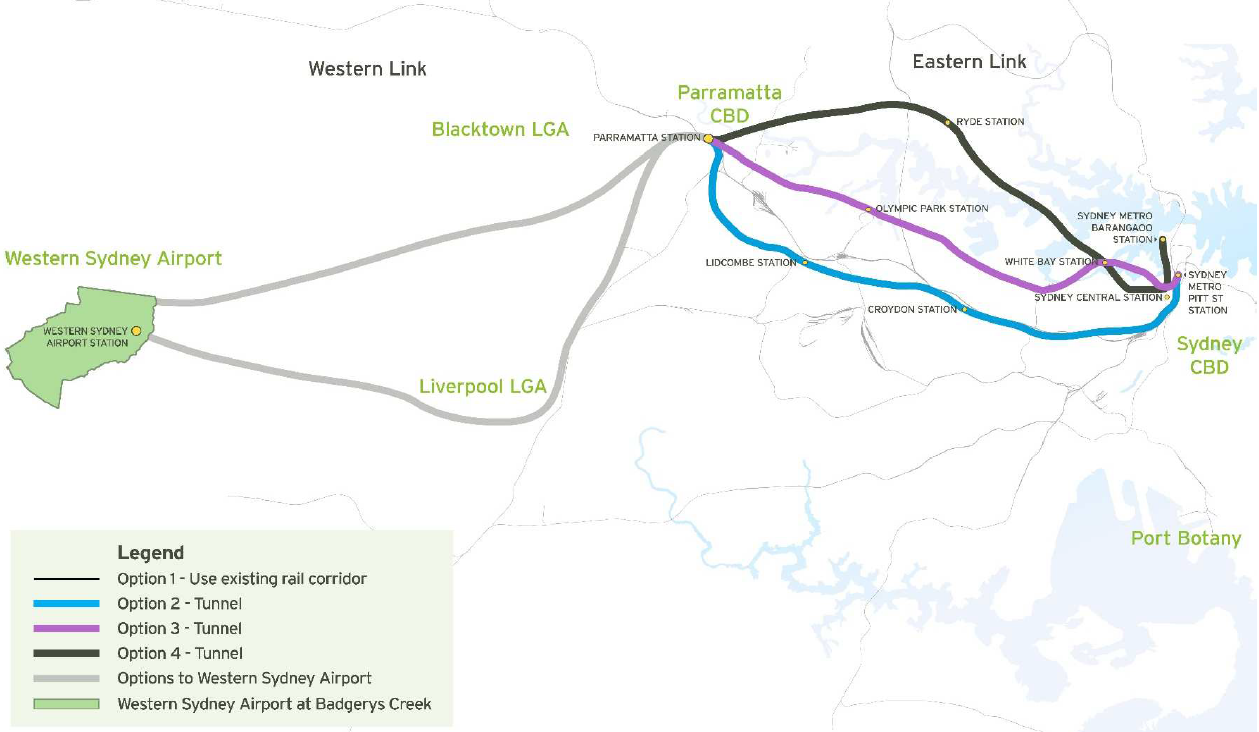The new Labor Government’s decision to review Sydney Metro West has led to speculation that additional stations could be added to the line. The previous government resisted calls to do this as it would have added travel time, opting to keep a 20 minute journey between Parramatta and the CBD as a core goal of the new line. However, with tunnelling already underway, the alignment and depths of the tunnels pose a challenge for adding new stations, with the currently planned stations being 18m-30m below ground but potential stations being as deep as 91m. In addition, new stations will likely add to construction costs that have already blown out from $15bn to as high as an estimated $27bn. The incoming government may seek to recoup some of this with new residential developments, a strategy that is consistent with more stations.

The most glaring segment in terms of lack of stations is the 7km between Parramatta and Sydney Olympic Park. An additional station or even two could fit in this segment. Camellia is possible, if the alignment is re-routed. Stations at Rosehill or Silverwater would be too deep unless the tunnel depths are adjusted. However, a station at Newington appears possible, given the change in NSW Government priority on housing. A recent SMH article suggests that Camellia and Silverwater, both in this segment, were the most likely additions to the line.

A station for Camellia was investigated and looked positive as it “could be located in the future Camellia Town Centre, offering an opportunity for an interchange with the future Parramatta Light Rail and supporting urban renewal” (Metro West EIS 2020, p. 3-4). However, this would be on a Northern alignment that is different from the final choice of a Southern route between Parramatta and Sydney Olympic Park. Building a station here would require a redesign of the tunnel alignment. This is easier for this part of the line, as even before delays to the project Tunnel Boring Machines were not set to begin digging here until the final quarter of 2023.

Though not initially investigated, two station locations are possible at Rosehill. One where the old Rosehill Station was located (point 10 on the map above), next to the racecourse itself. However, this would be 42m deep. The other option is at the Rosehill service facilty (point 12 on the map above). This is a much shallower 27m deep, but provides limited connectivity.
A station at Silverwater was rejected because it “would not align with the Government’s current strategic land use vision to retain essential urban services in this area” (Metro West EIS 2020, p. 3-4) due to the significant industrial land. A services facility is currently planned for Silverwater (roughly point 17 on the map below) but this is 44m deep.

A Newington station shows the most promise. It was initially rejected because it “would not align with the current strategic land use vision for this area which seeks to retain the existing residential community without any significant increase in density, enabling the retention and protection of essential industrial and urban services land in adjoining Silverwater” (Metro West EIS 2020, p. 3-5). However, with the new Labor Government seeking to rezone and redevelop land, a station at Newington (point 20 on the map above) at just over 30m deep seems like the most likely option that does not involve re-designing the tunnel routes.
Sydney Metro West has another long segment, with 5km between Five Dock and The Bays. An additional station could be possible, either at Lilyfield or Leichhardt North. However, on closer inspection neither seems likely at this stage in the project.

A station at Lilyfield is possible at two locations. First is at Callan Park (point 48 on the map above), but would be 91m deep and entirely heritage listed, thus limiting any potential development. The other is at Leichhardt Oval (point 46 on the map), but this would still be 58m deep and again lack opportunity for redevelopment that the government would likely seek when adding new stations.

A station at Leichhardt North was initially rejected as it “would present challenging constructability and deliverability due to interaction with the Rozelle Interchange and Hawthorne Canal” while also requiring a “very deep station” (Metro West EIS 2020, p. 3-7). A convenient station location is available next to the Leichhardt North light rail station, as the NSW Government purchased the Dan Murphys site for the Westconnex project but then never used it. However, as of July 2023, the two Tunnel Boring Machines progressing West are 250m from Balmain Road, and would need to change direction for a new Southern alignment around there. This would take time and so a quick decision would need to be made. Given that the NSW Government is awaiting the results of a review into Metro West that is still months away and that any delays would add to costs, this would appear unlikely.
The final option for additional stations on the line involves extending the line East past the CBD terminus at Hunter St. The City of Sydney has been calling for a station at Zetland for quite some time, while Federal MP for Sydney Tanya Plibersek recently added her name to the list of those calling for a station at Zetland.











